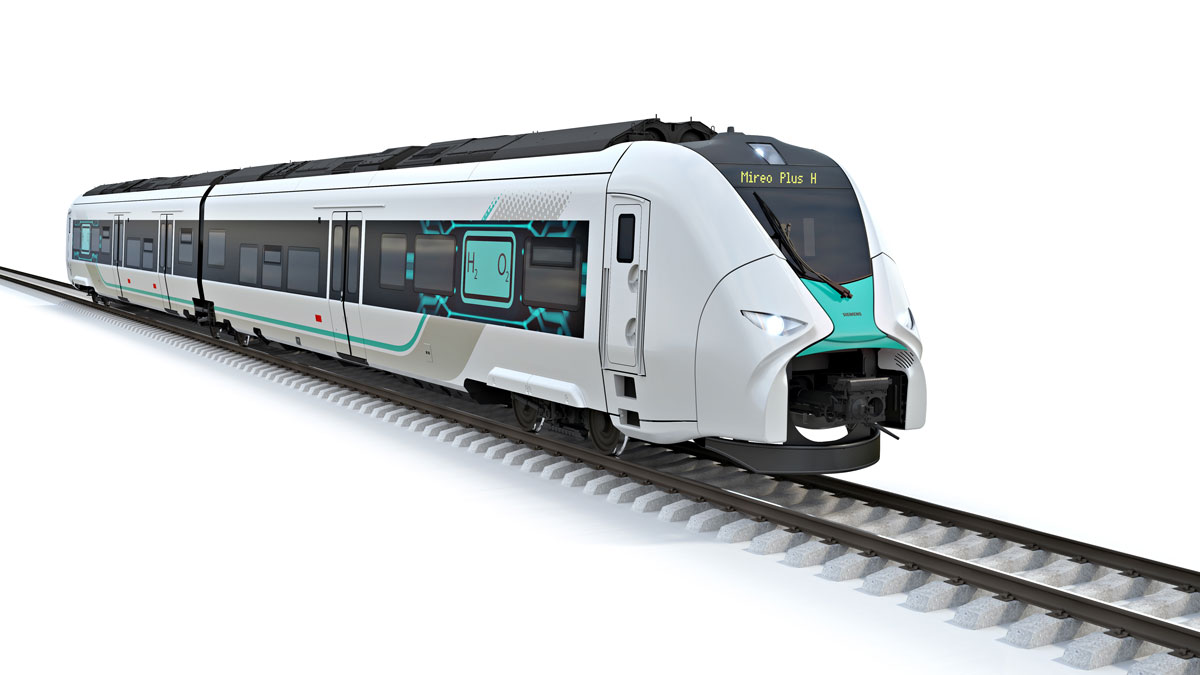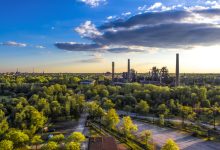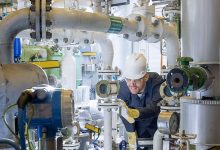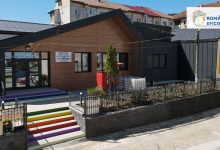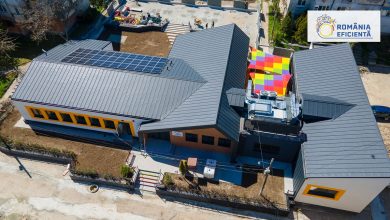Siemens Mobility and Deutsche Bahn Launch Hydrogen-powered Train
Siemens Mobility and Deutsche Bahn (DB) are driving forward the climate-friendly transition in transport and are testing the use of hydrogen for rail for the first time. The aim is to test a completely new overall system consisting of a newly developed train and a newly designed filling station. DB will refit one of its maintenance shops for servicing the hydrogen-powered train.
Both companies will test a climate-friendly complete system consisting of the train and its specially developed infrastructure.
The system consisting of trains and infrastructure is intended to replace diesel powered trainsets operating on regional routes and further reduce CO2 emissions. A one-year test of the train in the region around the city of Tübingen is planned. The state government of Baden-Württemberg is providing support for the project, and the Federal Ministry for Transport and Digital Infrastructure (BMVI) has announced its intention to fund the project.
The prototype that Siemens Mobility will build is based on the Mireo Plus regional train. The two-car train set will be equipped with a newly developed hydrogen drive.
The designated Mireo Plus H will be as powerful as its electric counterpart and have an operating range of up to 600 kilometres.
Deutsche Bahn is developing a new type of fuelling station that can refuel the train in the same time as a diesel-powered train. The hydrogen will be produced on site in Tübingen using traction electricity generated from renewable sources. DB will partially refit its maintenance shop in the city of Ulm to service the new hydrogen train.
During its planned trial operation between Tübingen, Horb and Pforzheim in 2024, the train will replace a conventional diesel-powered unit running on the route. The new hydrogen drive will save around 330 tons of CO2 in one year.
DB currently operates around 1,300 diesel-powered trains in regional service, and roughly 40 percent of DB’s 33,000-kilometer rail network is not electrified. In addition to the option of further electrifying the system, the use of hydrogen-powered trains offers one possibility for DB becoming climate-neutral.
“This project proves that Deutsche Bahn is not just a mobility company, but a technology group as well. We need to bring our fossil fuel consumption down to zero. Only then can DB be climate-neutral by 2050. By that point, we won’t have a single diesel-powered train operating in our fleet,” Prof. Sabina Jeschke, DB Board Member for Digitalization and Technology says.
“Siemens Mobility and Deutsche Bahn will jointly develop the next generation of a hydrogen traction system – a complete system consisting of a hydrogen-powered train and infrastructure, including a new and innovative fuelling station that can quickly refuel the train in just 15 minutes. The train will have 1.7 MW of traction power providing up to 1.1 m/s² acceleration and a top speed of 160 km/h. This innovative technology will make hydrogen-powered train operations faster, more efficient, and more environmentally friendly. Hydrogen drives are an advanced, emission-free form of propulsion that will help decarbonize rail transport and make a significant contribution toward achieving our climate targets,” Michael Peter, CEO of Siemens Mobility mentions.
“It’s great that the first train employing this new and sustainable technology will be tested here in BadenWürttemberg. Especially on non-electrified routes, hydrogen fuel cell propulsion can become a climate-friendly alternative to diesel propulsion. Whether powered by overhead line electricity or hydrogen – the decisive factor is that the energy comes from renewable sources. The country likes to be a pioneer for modern, sustainable rail transport. It is an essential part of the transition in transport,” Winfried Hermann, Minister of Transport, Baden-Württemberg says.
Project details
Officially, the joint funding project is called ‘H2goesRail’. The Federal Ministry of Transport and Digital Infrastructure (BMVI) has announced funding through the National Innovation Programme Hydrogen and Fuel Cell Technology (NIP 2). NIP 2 is coordinated by the National Organisation Hydrogen and Fuel Cell Technology (NOW) GmbH and implemented by the Project Management Organisation Jülich.
Hydrogen propulsion
With hydrogen drive systems, the reaction of hydrogen and oxygen produces electrical energy and water as a ‘waste product’. These trains can be deployed by DB to become climate-neutral and replace diesel vehicles with alternative drive systems.
Green electricity is used to produce the environmentally friendly green hydrogen. DB Energie is responsible for its supply.
Mireo Plus H
Siemens is developing a two-car commuter train with a state-of-the-art hydrogen drive system for one-year trial operation. It consists of a fuel cell and a lithium-ion battery.
The Mireo Plus H will be as powerful as electric multiple-unit trains and have a range of 600 kilometres – depending on operating conditions such as the season or the route. A three-car version will have a range of 1000 kilometres. Low life-cycle costs due to low maintenance and repair costs and a top speed of 160 kilometres per hour are the vehicle’s distinguishing features.
Filling station
The hydrogen is produced by electrolysis in a DB Energie mobile filling station at the DB Regio plant in Tübingen. In the so-called electrolyser, water is split into hydrogen and oxygen by means of electricity. Compressed in a compressor, the hydrogen is stored in a mobile storage unit. Prior to the refuelling process, the green fuel is processed and cooled in the adjacent tank trailer. The mobile structure makes further test projects possible. DB Energie develops, tests, and optimises the necessary hydrogen infrastructure.
Rapid refuelling
The train is refuelled with hydrogen in a novel process: for the first time the 15 minutes, won’t take longer than refuelling a diesel multiple unit. This is an important factor considering the closely timed DB train schedules in regional traffic. This means that hydrogen technology is competitive with the diesel fuel used in everyday operations until now.
Service infrastructure
The DB Regio workshop in Ulm will be converted for the maintenance of hydrogen powered trains. Extensively trained DB Regio staff who are supported by Siemens Mobility employees can then maintain the hydrogen train there.
Trial operation
Trial operation between Tübingen, Horb and Pforzheim will begin in 2024 and last for one year. Approximately 120,000 kilometres of scheduled rail service are planned. The route is particularly suitable based on the timetable intervals and topography. The Mireo Plus H from Siemens will replace a diesel railcar used on this route and save about 330 tons of CO2.
Background
On October 5 Siemens Energy and Siemens Mobility have signed a Memorandum of Understanding (MoU) to jointly develop and offer hydrogen systems for trains. The agreement was signed by Albrecht Neumann, CEO of Rolling Stock at Siemens Mobility and Armin Schnettler, Executive Vice President (EVP) of New Energy Business at Siemens Energy. The project aims at jointly developing holistic hydrogen solutions for rail transport and offering them to customers to promote the hydrogen economy in Germany and Europe and support decarbonization in the mobility sector.


